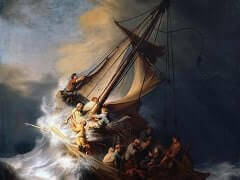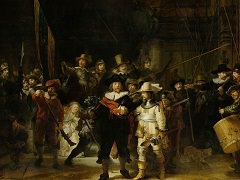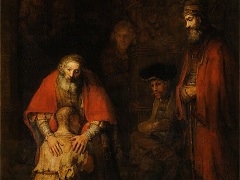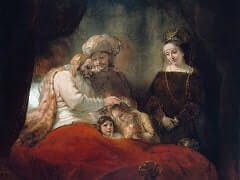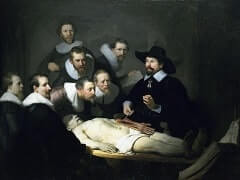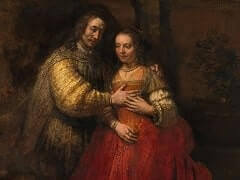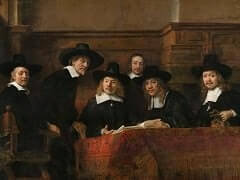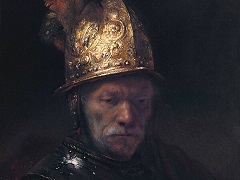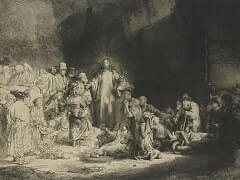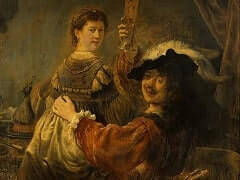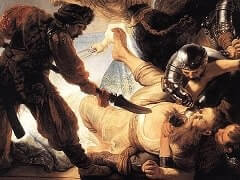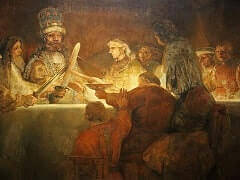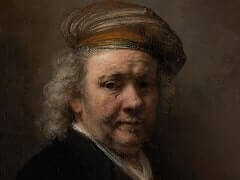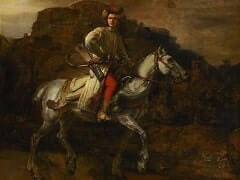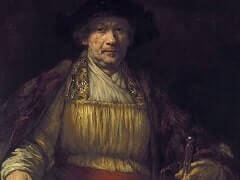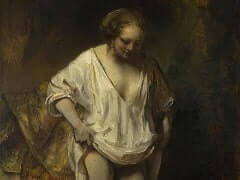Anna and the Blind Tobit by Rembrandt
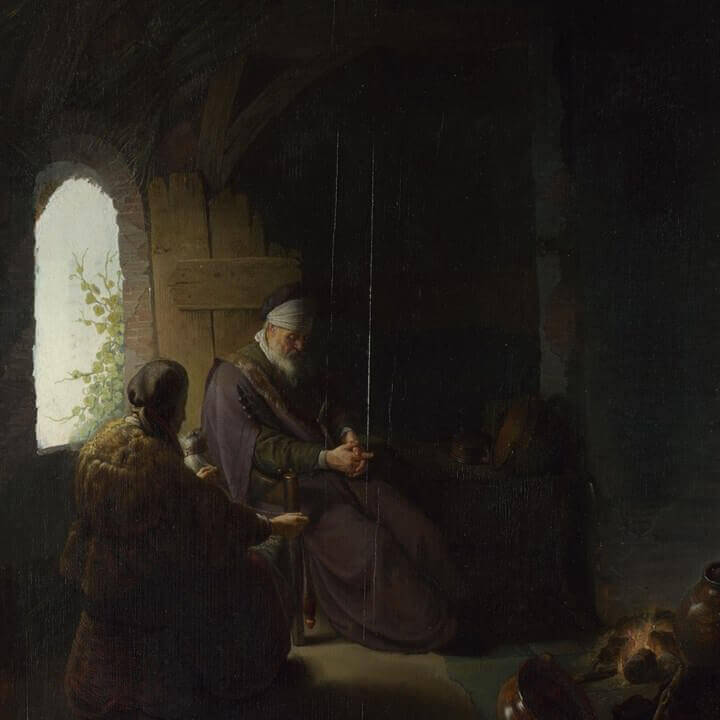
The story depicted in this painting derives from the apocryphal Old Testament Book of Tobit. A devoted Jew and father of Tobias, Tobit had been blinded by sparrow droppings falling into his eyes (2:9-10). While enduring his fate with great fortitude, he eventually sent his son on a journey to collect some money he had left with Gabael in Media (4:20). Tobias was accompanied on his journey by the archangel Raphael. Following the attack of a large fish Raphael asked Tobias to keep its heart, liver and gall Upon his return home he used the gall to restore his father's sight (11:11-13). The moment shown here is Tobit's meditation on the vanity of human desires and the ephemeral nature of pleasure as told in Book 2. However, this episode precedes Tobit's blindness, and it seems more likely that the painting shows a later - unspecified - moment in the story when the blind Tobit and his wife, who is earning the family's living through spinning, are awaiting their son's return (10:1).
In the seventeenth century the books of the Old Testament and Apocrypha were a rich source of subjects for depiction in paintings and prints by Dutch artists. Although the Calvinist church in the Netherlands had certain reservations about the reliability of the apocryphal texts, it endorsed their didactic value. The story of Tobit in particular was appreciated for the protagonist's simple everyday piety and the model character of his marriage to Anna? For Rembrandt, the Book of Tobit seems to have been particularly interesting, as there are a considerable number of drawings, prints and paintings that take their subjects from this source. It has been argued that it was the subject of blindness and being able to see, which in central to the story of Tobit, that was of special interest to Rembrandt and his circle.

